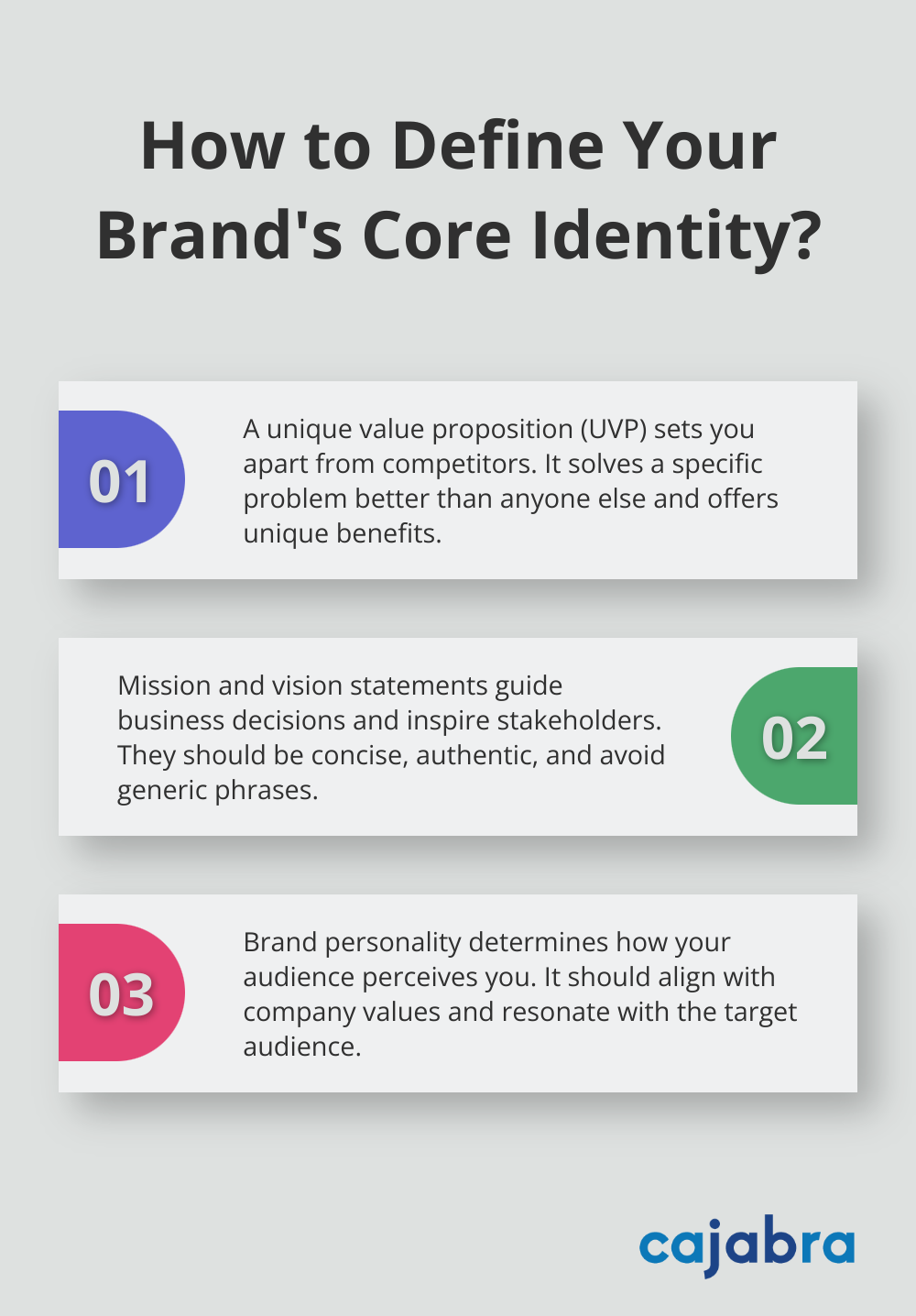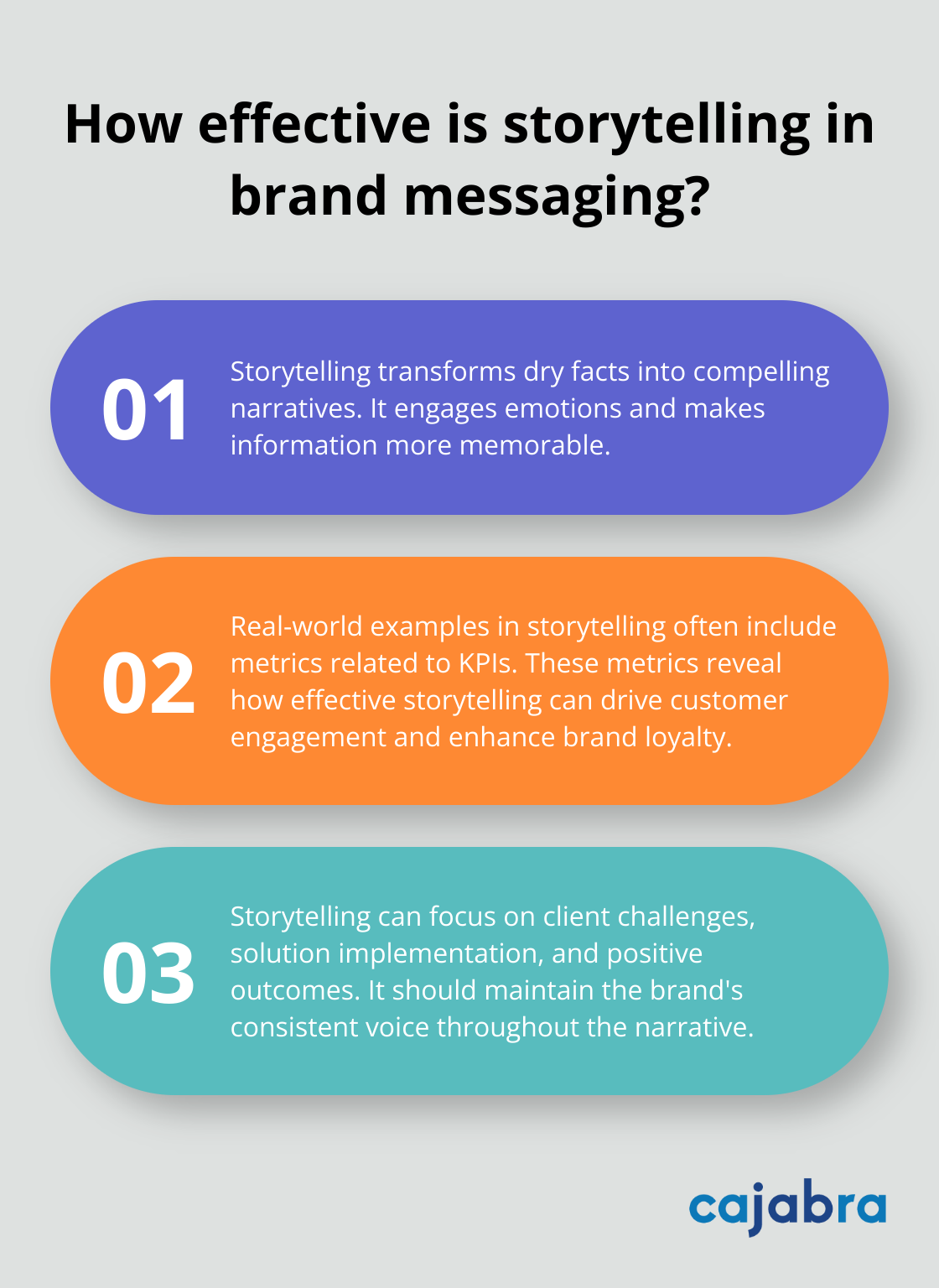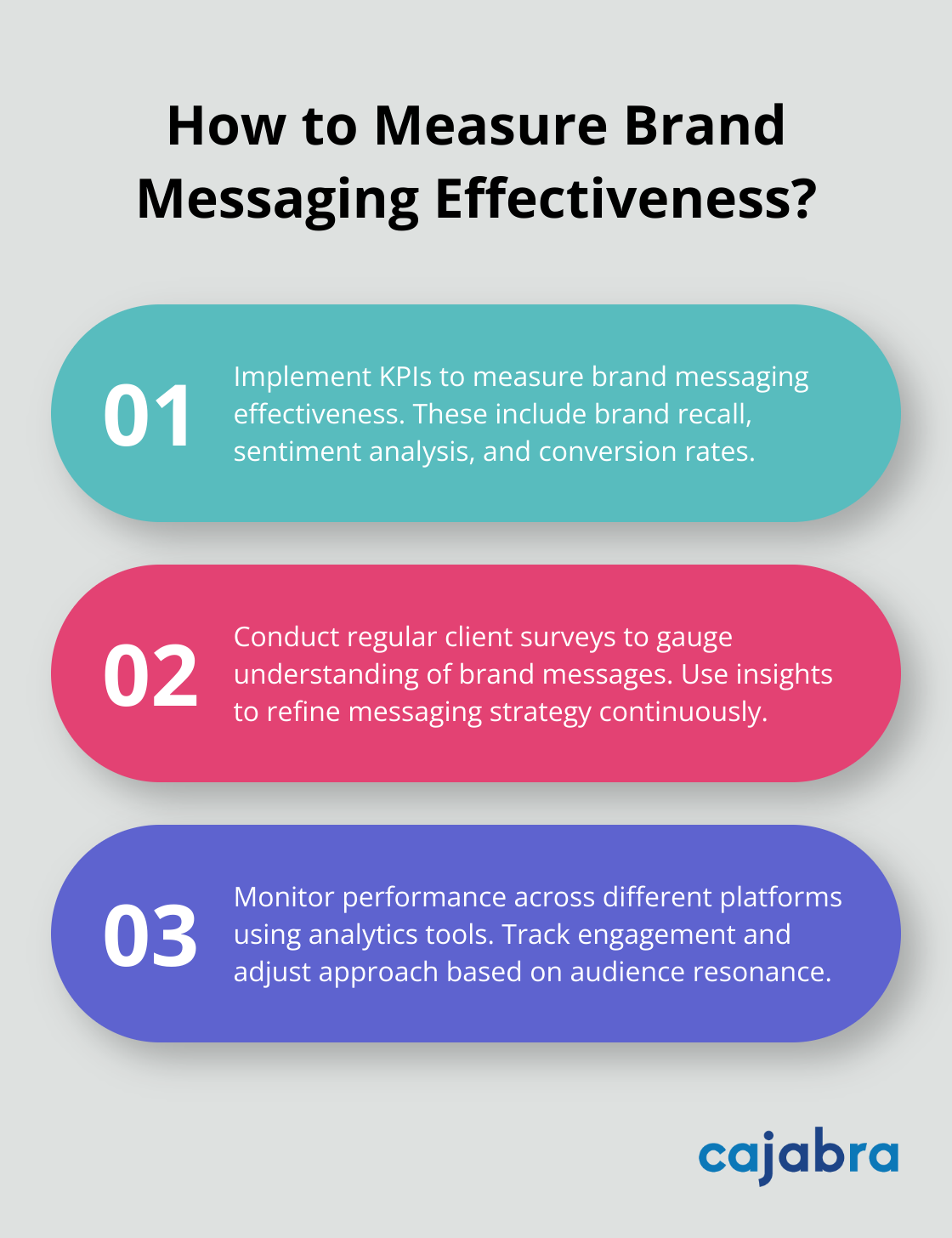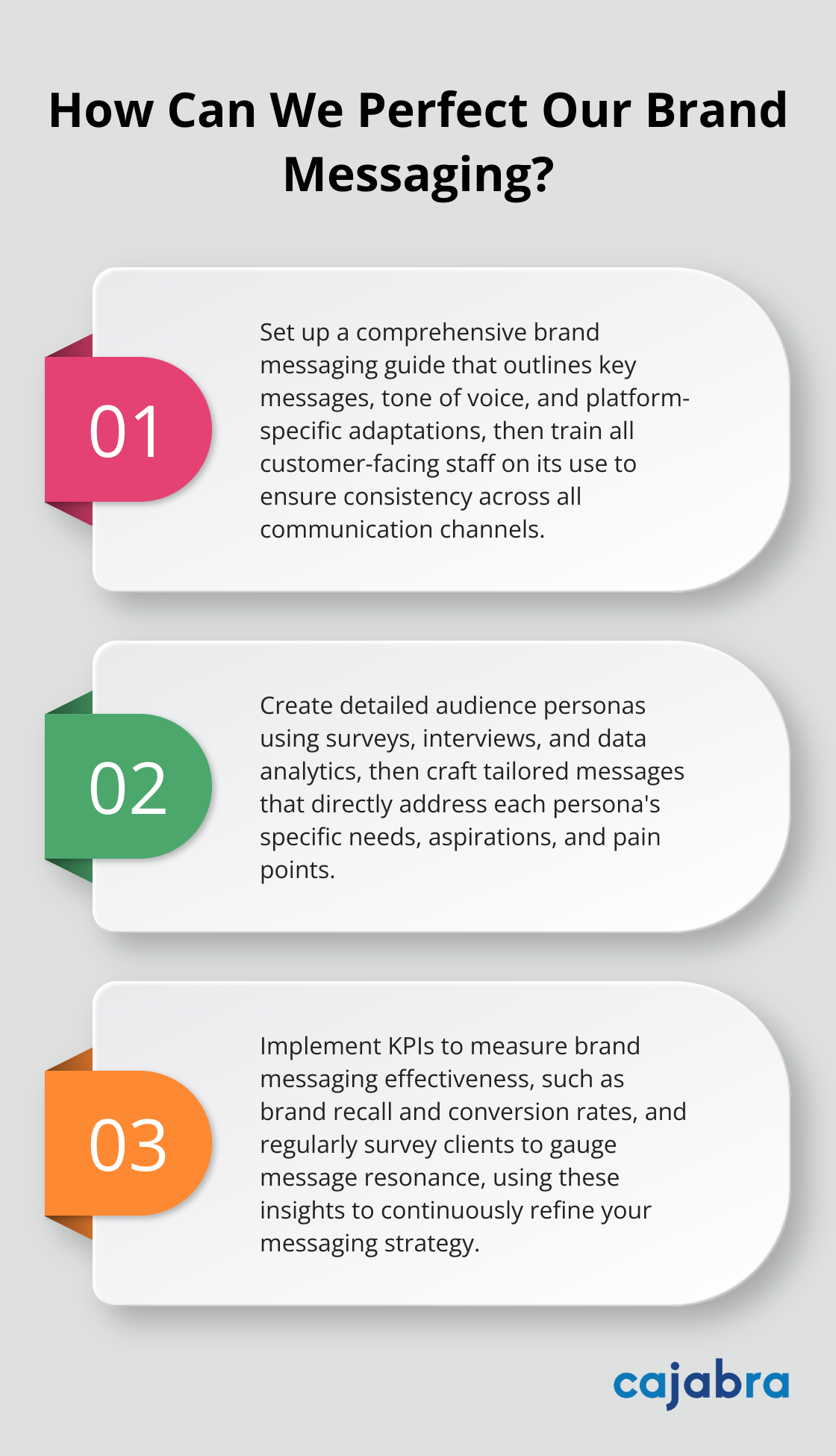
A strong brand messaging strategy is the backbone of effective communication with your audience. At Cajabra, LLC, we've seen firsthand how powerful, consistent messaging can transform a company's market presence.
In this post, we'll guide you through the essential steps to build a brand messaging strategy that resonates with your target audience and sets you apart from competitors.
Your unique value proposition (UVP) sets you apart from competitors. It's the reason clients choose you over others. To identify your UVP, ask yourself:

A clear, specific proposition immediately communicates your unique approach and the value you bring to clients. For instance, a specialized marketing service might offer a system that helps accountants secure retainer-based clients in a short timeframe (e.g., 90 days).
Your mission statement articulates your company's purpose, while your vision statement paints a picture of your desired future. These statements guide your business decisions and inspire your team and clients.
When you craft these statements, be concise and authentic. Avoid generic phrases and focus on what truly drives your business. For example, a mission could be to differentiate accounting firms through strong brand identity, tailored lead-generating websites, and effective sales funnels.
Your brand's personality is how you want your audience to perceive you. Are you professional and authoritative? Friendly and approachable? Innovative and cutting-edge? Your brand voice should reflect this personality consistently across all communications.
To determine your brand's personality and voice:
Authenticity is key. Your brand personality should align with your company's values and resonate with your target audience. If you target young entrepreneurs, a more casual and innovative voice might work well. If you serve established corporations, a more formal and authoritative tone could prove more effective.
Your brand's core identity should seamlessly integrate with your products or services. This alignment creates a cohesive experience for your customers and reinforces your brand's credibility.
Consider how each element of your offering (whether it's a product, service, or tool) reflects your brand's core values and personality. For example, if your brand emphasizes innovation, your offerings should incorporate cutting-edge technology or novel approaches to solving problems.
A strong brand identity isn't static; it evolves with your business and market changes. Regularly reassess your core identity elements to ensure they remain relevant and impactful.
This evolution doesn't mean completely overhauling your brand identity every few years. Instead, it involves making subtle adjustments to keep your brand fresh and aligned with your current business goals and market position.
As you define these core elements of your brand identity, you create a solid foundation for all your marketing efforts. This clarity helps you stand out in a crowded market and build stronger connections with your ideal clients. Now, let's explore how to translate this core identity into compelling brand messages that resonate with your audience.
Effective brand messaging speaks directly to your target audience's needs, desires, and pain points. Different segments of your audience may have varying priorities and concerns. For accounting firms, messages targeting small business owners might focus on cost-effective solutions and personalized service, while those aimed at larger corporations could emphasize scalability and advanced reporting capabilities.

To tailor your messages effectively, develop detailed audience personas. These should go beyond basic demographics to include psychographic information like values, goals, and challenges. Use surveys, interviews, and data analytics to gather this information. Once you have these insights, craft messages that directly address each persona's specific needs and aspirations.
Humans connect with stories. They engage our emotions and make information more memorable. In brand messaging, storytelling can transform dry facts into compelling narratives that resonate with your audience. These real-world examples often include metrics related to KPIs, revealing how effective storytelling can drive customer engagement, enhance brand loyalty, and improve overall business performance.
Instead of simply stating that your accounting firm offers efficient tax services, tell the story of a client who saved thousands of dollars (and hours of stress) by working with you. Use specific details and emotional touchpoints to make the story relatable and impactful.
When incorporating storytelling, focus on:
Keep your brand's voice consistent throughout these stories. If your brand personality is professional and authoritative, maintain that tone even in more narrative-driven content.
Your audience should receive the same core messages whether they visit your website, read your social media posts, or interact with your sales team. To achieve this consistency:
Create a comprehensive brand messaging guide. This document should outline your key messages, tone of voice, and how to adapt your messaging for different platforms while maintaining its essence.
Train all customer-facing staff on your brand messaging. This includes not just marketing and sales teams, but also customer service representatives and even accounting professionals who interact with clients.
Regularly audit your communications across all channels to ensure consistency. This includes everything from your website copy to email signatures and social media bios.
Adapt your core messages for different platforms without losing their essence. For example, a LinkedIn post might use more professional language, while an Instagram story could be more casual and visual, but both should convey the same fundamental brand messages.
Your brand messaging strategy should evolve as your business grows and market conditions change. Try to reassess your messaging periodically to ensure it remains relevant and impactful. This doesn't mean overhauling your entire strategy, but rather making subtle adjustments to keep your brand fresh and aligned with current business goals.
As you refine your brand messaging strategy, you'll create a solid foundation for all your marketing efforts. This clarity helps you stand out in a crowded market and build stronger connections with your ideal clients. The next step is to put this strategy into action across your organization.
Implementing a brand messaging strategy requires more than just creating guidelines; it involves bringing your brand to life across every touchpoint. This chapter outlines key steps to effectively roll out your brand messaging.
Your employees act as your brand ambassadors. To ensure they accurately represent your brand, conduct comprehensive training sessions to educate employees on the firm's values and how to incorporate them into their daily responsibilities. These sessions should cover your brand's core values, key messages, and how to adapt them for different situations.

Create a comprehensive brand messaging playbook that all team members can easily access. This resource should include examples of how to use your brand voice in various contexts (from client emails to social media posts). Update this playbook regularly to reflect any changes in your messaging strategy.
Your marketing materials often serve as the first point of contact between your brand and potential clients. Audit all existing materials and update them to align with your new messaging strategy. This includes your website, brochures, social media profiles, and even email signatures.
When you create new marketing content, use a checklist to ensure it aligns with your brand messaging. This checklist should include questions like: Does this piece reflect our brand personality? Do we address our audience's specific pain points? Do we consistently use our key messages?
Each platform has unique characteristics and audience expectations. While your core message should remain consistent, you need to tailor the way you deliver it.
Make sure your logo, color palette, and messaging is universal across all social media platforms, as this aids in brand recognition. For LinkedIn, focus on professional insights and industry trends. On Instagram, use visuals to tell your brand story. For your website, create in-depth content that showcases your expertise. Email newsletters can be more personal, addressing your audience directly.
Monitor the performance of your messaging across different platforms. Use analytics tools to track engagement and adjust your approach based on what resonates most with your audience on each platform.
Implement key performance indicators (KPIs) to measure the effectiveness of your brand messaging. These could include metrics like brand recall, sentiment analysis, and conversion rates. Regularly survey your clients to gauge how well they understand and connect with your brand messages.
Use these insights to continuously refine your messaging. If certain messages don't resonate, adjust them. Brand messaging is an evolving process, not a one-time task.
If you work with external partners or agencies, fully brief them on your brand messaging strategy. Provide them with your brand messaging playbook and schedule regular check-ins to review their work for alignment with your brand's communication.
A strong brand messaging strategy forms the cornerstone of effective marketing for accounting firms. It encompasses not just the content of your communication, but also its tone and delivery across various channels. This approach creates a powerful brand presence that resonates with your target audience and sets you apart in a competitive landscape.

Your brand messaging strategy should adapt to your business growth and market changes. We at Cajabra have witnessed how a well-executed strategy can transform accounting firms from overlooked to overbooked. Our specialized marketing services help accountants secure retainer-based clients and position themselves as industry leaders.
As you refine your brand messaging strategy, stay true to your core values and listen to your audience. Implement your strategy with commitment and consistency, train your team thoroughly, and measure the effectiveness of your efforts. With persistence and the right approach, you'll create a brand that not only stands out but also builds lasting relationships with your clients.



